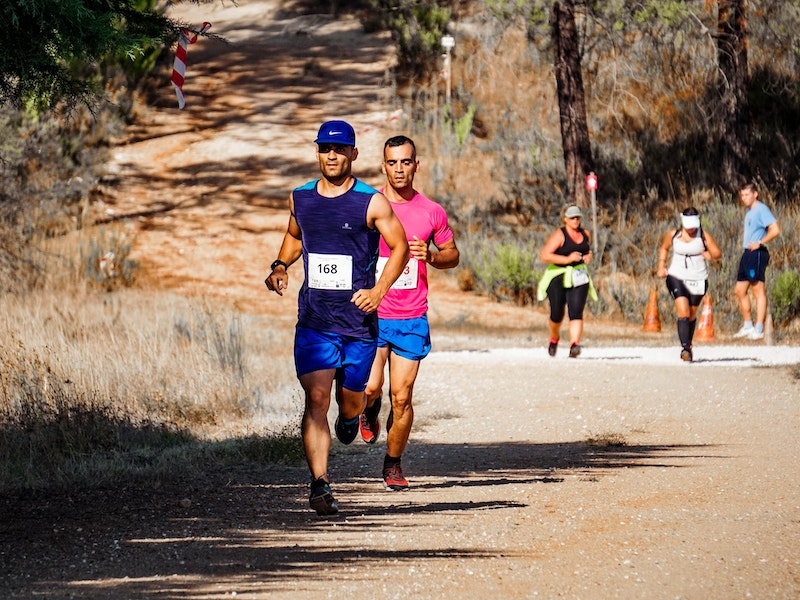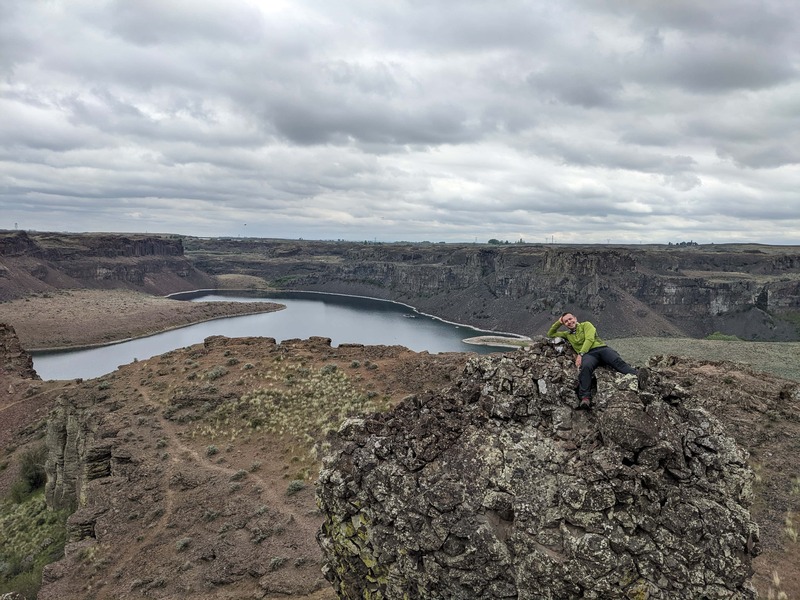Mountain running is an extreme sport that involves running on mountain trails, often at high altitudes and steep gradients. This adrenaline-pumping activity is not for the faint of heart, but it is an excellent way to push your limits and experience the raw beauty of nature. In this article, we’ll provide you with a comprehensive guide on mountain running and how you can prepare for and master the challenges of this thrilling activity.
Preparing for Mountain Running
 Mountain running requires a high level of physical fitness, endurance, and strength. To prepare for mountain running, you need to develop a consistent training routine that focuses on building your cardiovascular endurance and leg strength.
Mountain running requires a high level of physical fitness, endurance, and strength. To prepare for mountain running, you need to develop a consistent training routine that focuses on building your cardiovascular endurance and leg strength.
One of the best ways to train for mountain running is to run on hilly terrain and gradually increase the distance and elevation gain of your runs. You can also incorporate other forms of cardio, such as cycling or swimming, to improve your overall fitness. Strength training, such as weight lifting or bodyweight exercises, can help improve your running form, reduce the risk of injury, and increase your overall power and endurance.
Mental preparation is also essential for mountain running, as it can be physically and mentally demanding. To build mental toughness, you can try visualization techniques, meditation, or positive self-talk. These techniques can help you stay focused, motivated, and resilient during challenging runs.
In addition to physical and mental preparation, having the right gear and equipment is crucial for mountain running. Invest in a sturdy and supportive pair of trail running shoes with good grip and traction. Dress in lightweight, breathable clothing that wicks away sweat and protects you from the elements. Carry a hydration pack or water bottle to stay hydrated and fueled during your runs.
Techniques for Mountain Running
Running on mountain trails is different from running on flat terrain. It requires a different set of skills and techniques to navigate the steep inclines, rocky paths, and uneven terrain. Here are some essential techniques that you need to master for mountain running:
Uphill and Downhill Running Techniques
Uphill running requires a different technique than running on flat ground. To conserve energy and maintain good form, lean slightly forward, shorten your stride, and lift your knees higher. Use your arms to help propel you forward and maintain your balance.
Downhill running can be tricky and dangerous if not done correctly. To run downhill safely and efficiently, keep your weight centered over your feet, lean slightly back, and take shorter, quicker steps. Use your arms to balance yourself and control your speed.
Breathing and Pacing Strategies
Breathing and pacing are crucial for mountain running, especially at high altitudes where the air is thinner. To avoid getting out of breath, breathe deeply and rhythmically, inhaling through your nose and exhaling through your mouth. Try to maintain a steady pace, especially on the uphill sections, to conserve energy and avoid burning out too quickly.
Navigation and Route Planning
Navigation and route planning are critical for mountain running, as the trails can be complex and sometimes poorly marked. Before you embark on a run, study the trail map, and plan your route carefully. Familiarize yourself with the terrain, landmarks, and potential hazards, and carry a map or GPS device to stay on track.
Strategies for Mountain Running
Mountain running can be risky, and safety should always be your top priority. Here are some essential strategies to keep in mind for a safe and enjoyable mountain running experience:
Safety Tips and Precautions
Safety should always come first when mountain running. Here are some important safety tips and precautions to keep in mind:
Always check the weather forecast before you head out on a run. Avoid running in extreme weather conditions such as thunderstorms, heavy rain, or snowstorms.
Wear appropriate clothing and gear for the weather conditions and the terrain. Dress in layers and carry extra clothing and gear in case of unexpected changes in weather or emergencies.
Always carry a mobile phone or emergency whistle with you in case of an accident or emergency. Make sure that you have informed someone of your planned route and expected time of return.
Be aware of your surroundings and stay alert to any potential hazards such as steep drop-offs, loose rocks, or unstable terrain. Always stay on marked trails and avoid shortcuts or unmarked routes.
Take breaks and rest when you need to. Don’t push yourself too hard, and listen to your body’s signals. If you feel dizzy, lightheaded, or have difficulty breathing, stop running and seek medical help immediately.
Nutrition and Hydration Strategies
Mountain running requires a lot of energy and hydration, especially during long-distance runs. Here are some essential nutrition and hydration strategies to keep you fueled and hydrated during your runs:
Stay hydrated by drinking plenty of water and electrolyte-rich fluids before, during, and after your runs. Carry a hydration pack or water bottle with you to ensure that you have enough fluids throughout your run.
Eat a balanced diet that includes complex carbohydrates, lean protein, and healthy fats. Carbohydrates are essential for providing the energy you need for long-distance runs, while protein helps repair and build muscle tissue. Fats help provide sustained energy and aid in nutrient absorption.
Pack energy bars, gels, or other high-carbohydrate snacks to eat during your runs. These snacks can provide a quick burst of energy when you need it most.
Recovery and Injury Prevention Techniques
Recovery and injury prevention are essential for mountain runners, as the sport can be physically demanding and put a lot of strain on your muscles and joints. Here are some essential recovery and injury prevention techniques to help you recover and prevent injuries:
Stretch before and after your runs to loosen up your muscles and prevent injuries. Focus on stretching your calves, hamstrings, quads, and glutes.
Use a foam roller or massage ball to massage sore muscles and help release tension and tightness.
Take rest days and allow your body to recover between runs. Listen to your body’s signals and adjust your training schedule if you feel tired, sore, or fatigued.
Get enough sleep and rest to help your body recover and repair. Aim for 7-9 hours of sleep per night to help your body recover and stay healthy.
Conclusion
Mountain running is an exhilarating and challenging sport that requires a lot of preparation, training, and mental toughness. By following the techniques, strategies, and safety tips outlined in this article, you can become a confident and skilled mountain runner and experience the thrill of conquering the heights. Remember to always prioritize safety, stay hydrated and fueled, and listen to your body’s signals. With practice and perseverance, you can become a master of mountain running and push your limits to new heights.









